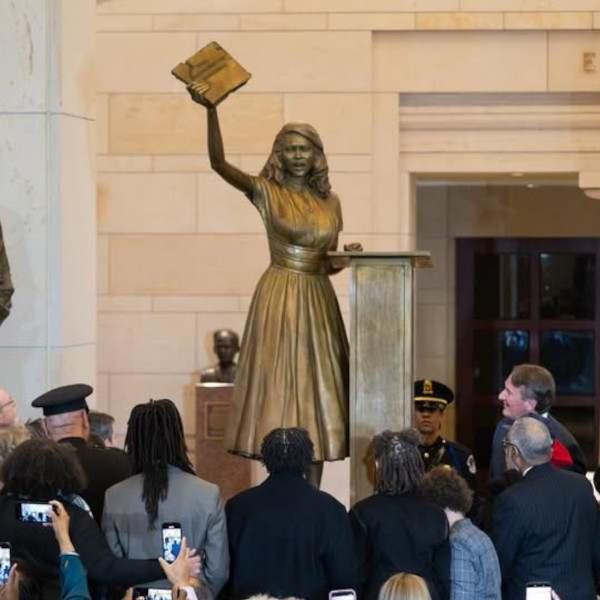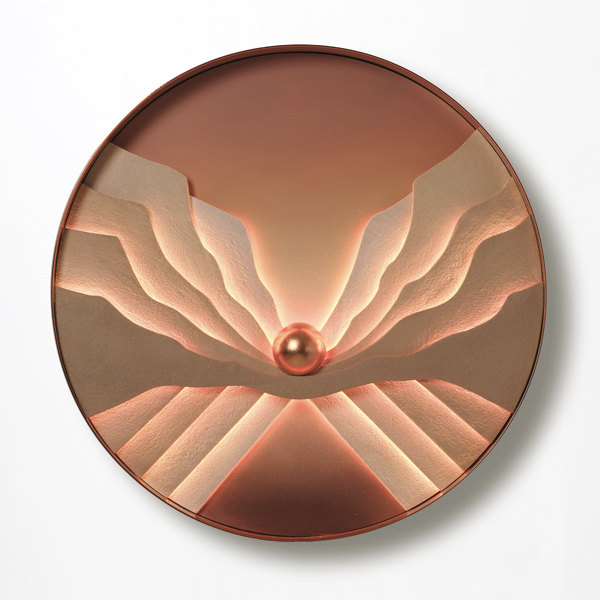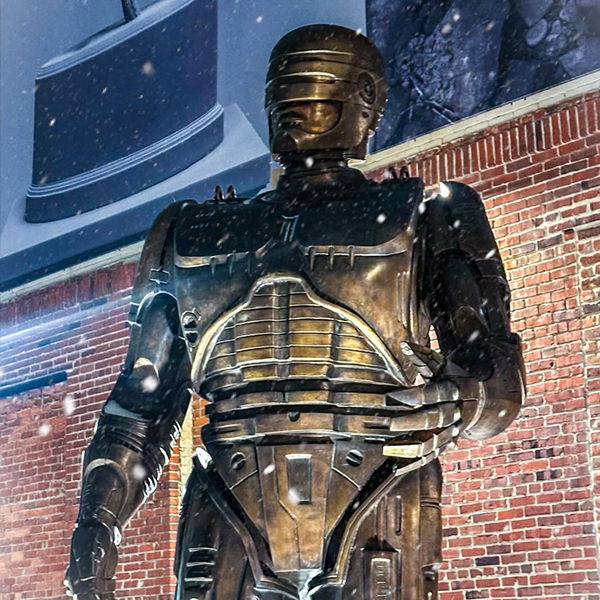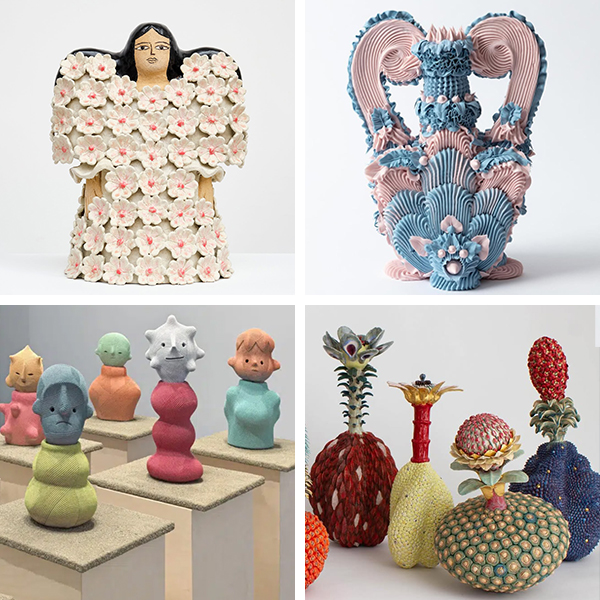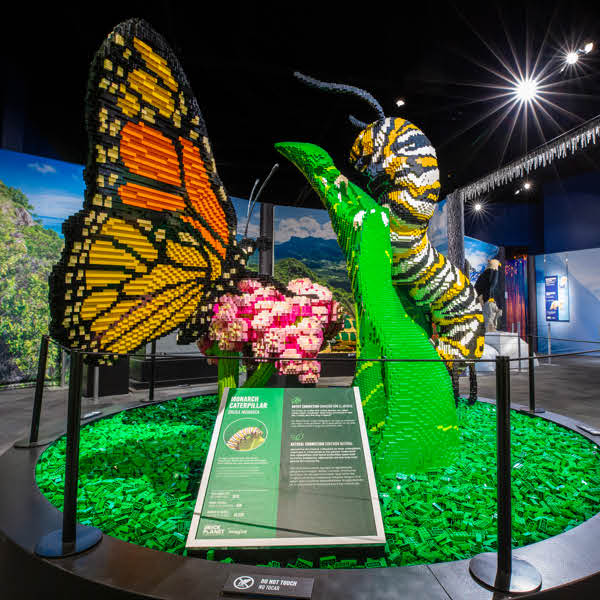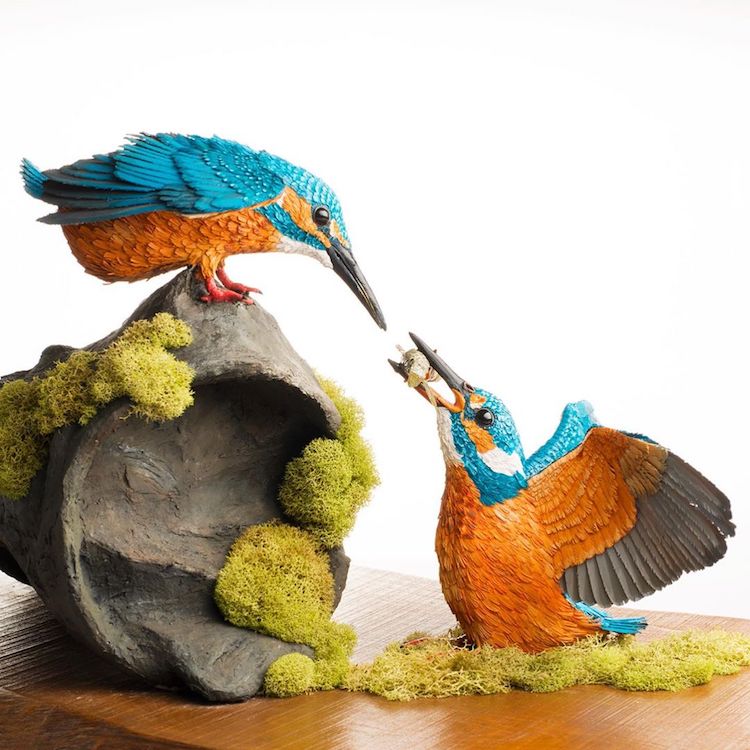
This post may contain affiliate links. If you make a purchase, My Modern Met may earn an affiliate commission. Please read our disclosure for more info.
The wondrous beauty of the animal kingdom is a constant source of inspiration for artist Niharika Rajput. In particular, she finds that birds are her greatest muses, and she tries to capture their likenesses in stunning paper and wire sculptures.
Based in New Delhi, the artist originally began making three-dimensional figurines as a way to combine her two passions: wildlife and art. Rajput had always loved birds, but it wasn't until she saw a flock of red-billed blue magpies departing from a tree that she had the idea to replicate the majestic creatures. She soon gained momentum in making intricate sculptures based on different birds and relishing in the exact details of their eyes, beaks, and plumage.
Through steady and deliberate work, Rajput intends to create a sculpture of every living bird species. Already, the young artist has made stunning replicas of ruby-throated hummingbirds, Indian rollers, malachite kingfishers, among many others. She painstakingly applies precise features to every subject, resulting in sculptures that appear so lifelike that they trick the viewer into questioning if they are real.
While working with paper allows Rajput to explore the characteristics of different species, it also provides her a way to raise awareness of animal endangerment and promote bird conservation in India and the rest of the world.
We recently spoke with Rajput about her masterful bird sculptures in flight and flourishing creative practice. Scroll down to read My Modern Met's exclusive interview.
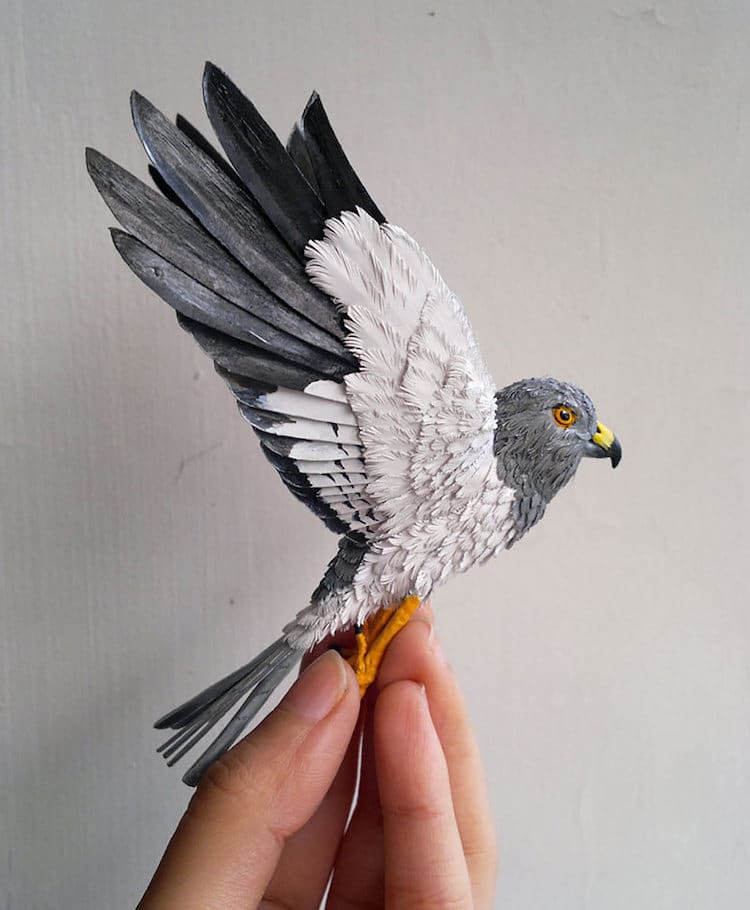
How did you start making paper sculptures?
I was always a deep admirer and a keen observer of all things wild growing up and art was my passion, so when the time came to make a career choice I decided to amalgamate my love for art and wildlife. Having said that—it took some time before I finally landed on the paper sculptures. My earlier pieces were all inspired by nature and wildlife but were abstract in form and made using materials such as wire mesh, papier-mâché clay, jute, etc.
Even though I always had an unmatched love for birds, I never considered building them until I saw a flock of about 12 to 13 red-billed blue magpies taking off from a tree in Himachal Pradesh, a Northern Indian state in the Himalayas. This was the turning point for me. The beauty of those creatures left me awestruck and I instantly knew that for my sculptures I wanted to replicate birds to the very last detail. Then came the tedious task of identifying the right materials for these sculptures. I worked with fiber and epoxy before I landed on paper. Paper as a material replicated the feathers of the bird accurately.
What is your most important artist tool?
Well, I have to say my old, beat-up pair of scissors. I absolutely can’t do without them.
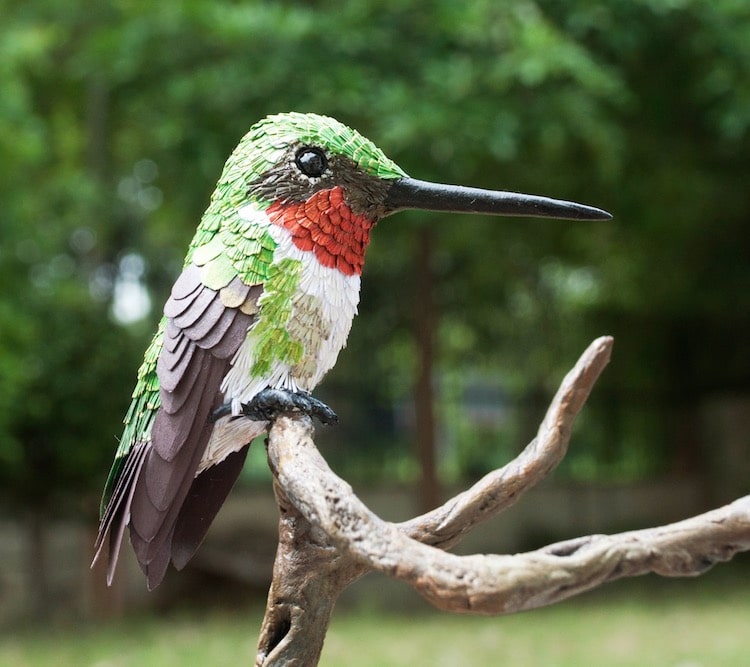
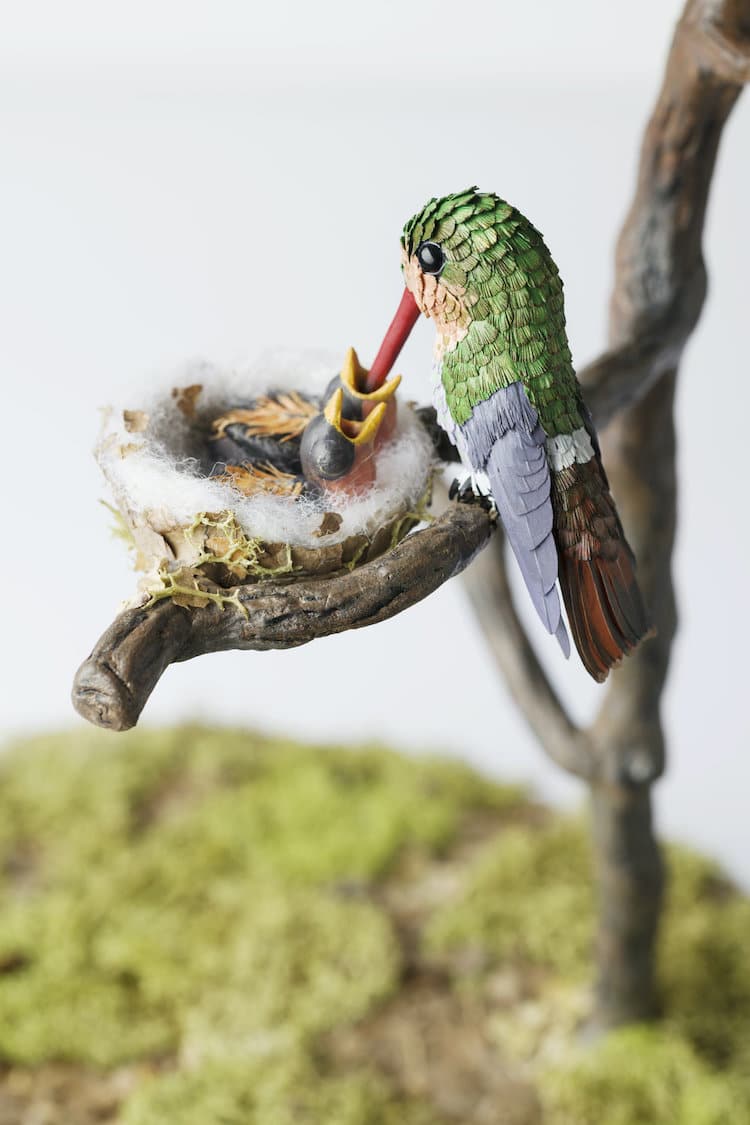
What do you try to achieve or express in each of your pieces?
My aim is to always build a bird that looks shockingly realistic, so the body proportions have to be right, the texture of the feathers have to be right. The eyes of the bird are the main feature—especially the glisten in the eyes—and can really bring it to life. I am still working on creating a narrative and the expressions.
How would you say your artistic practice has changed over time?
My artistic practice has grown in leaps and bounds since I first started building birds. Every bird is different from the other in terms of its size, texture, and the cut of the feathers and colors of the plumage. I personally feel that it’s a learning process and there’s still a lot that needs to go into it to make it look realistic.
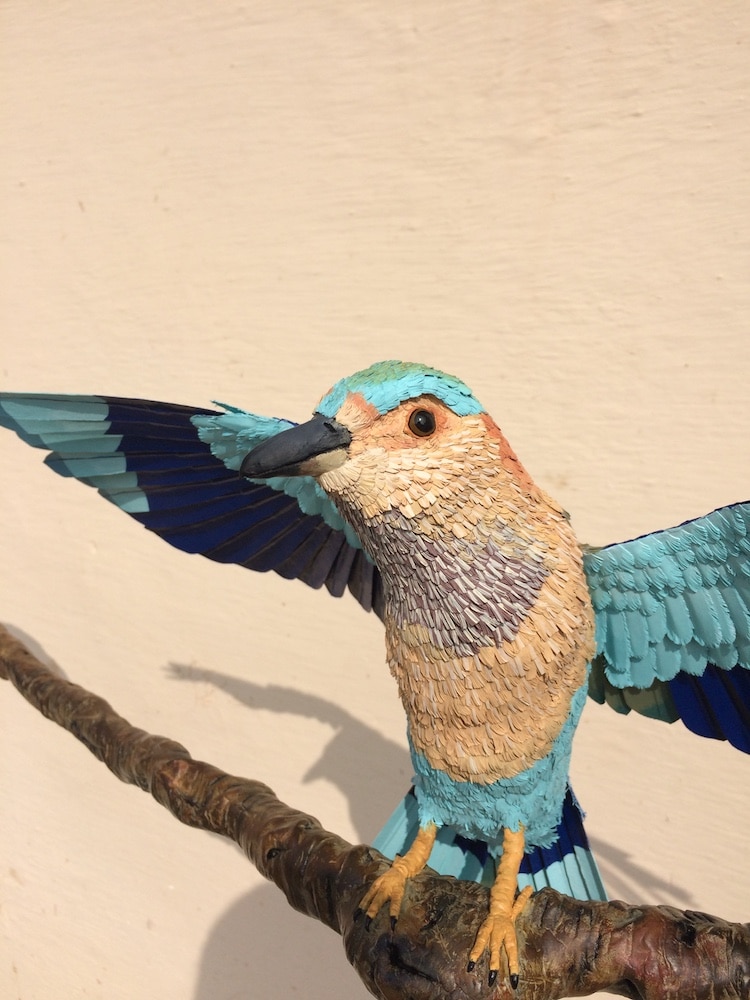
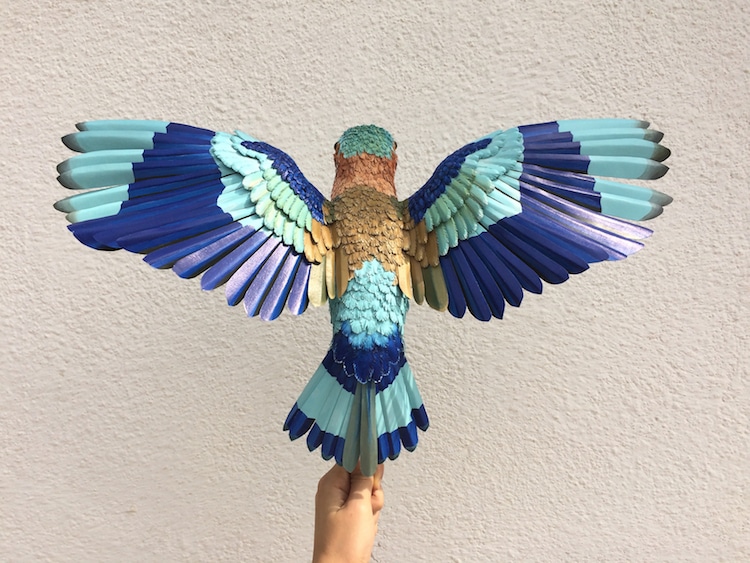
How do you decide which species of bird to make?
Well, some are project-based. If they have been commissioned by wildlife organizations or individuals then I have to build those birds. For personal projects, I select birds that I feel are the most challenging and have the most vibrant colors. I love building birds with the most exciting plumage display.
If I have to build a collection then I look at the different species of that particular bird, which can also be region-specific.

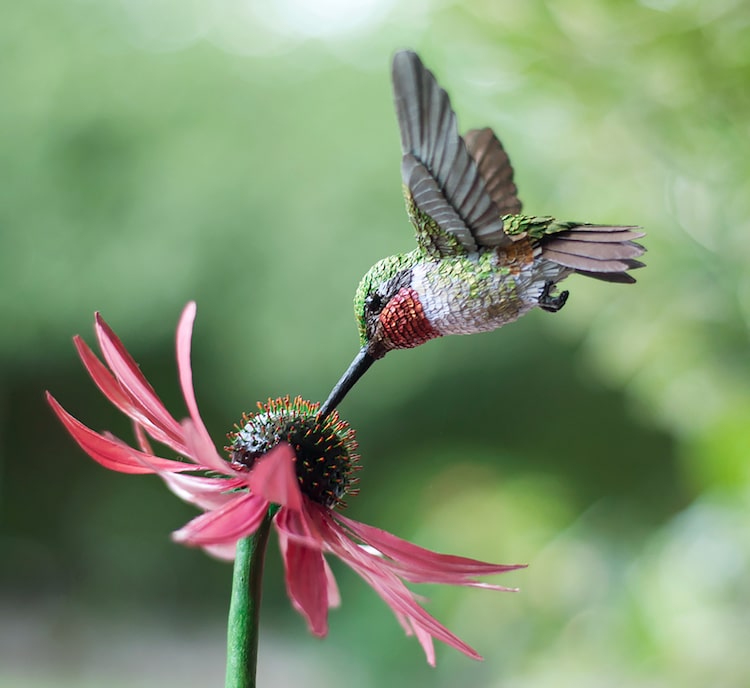
Is there an artwork you are most proud of?
Yes, my recent favorite is the paper sculpture of the Ruby-Throated Hummingbird sucking nectar from a coneflower. It was a challenging piece to build, having the bird suspended in mid-air.
How do you know when a work is finished?
I know my birds are ready when all the details are in place and when my audiences are confused as to whether or not it is a real bird.
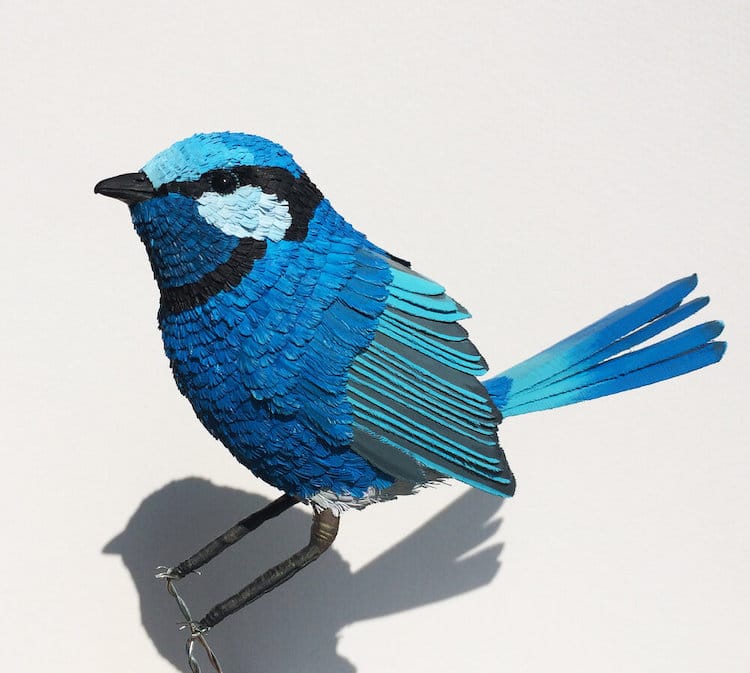
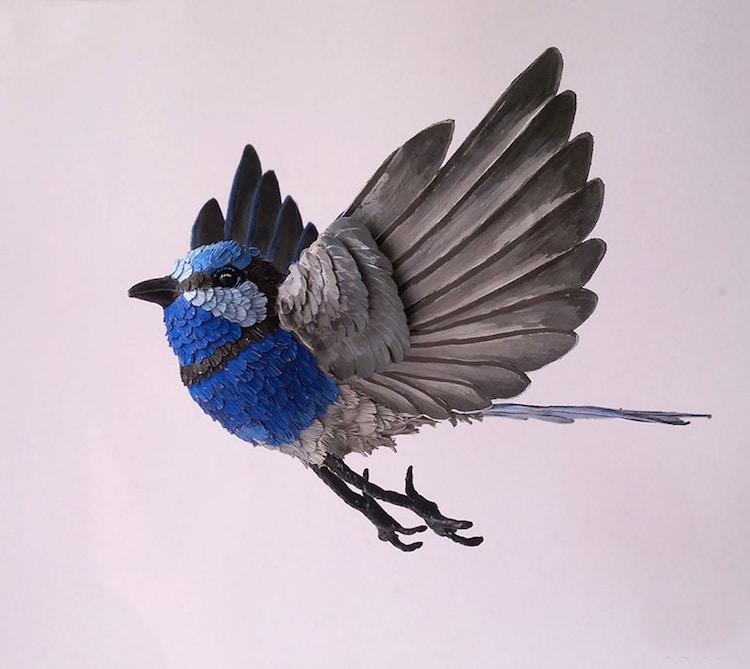
What is the best thing about being an artist?
Dexterity and a unique sense of perception. For me personally to be able to construct something with my hands is extremely calming and peaceful; and my subject keeps me close to nature, which gives me tremendous joy.
What projects are you currently working on?
I am working on a commissioned piece for a client, it involves building three sculptures which will go up on a wall. I have already finished the Indian roller and now I am working on the splendid fairywren and the verditer flycatcher which will be perched on a branch. I usually build the perches myself instead of using real wood.
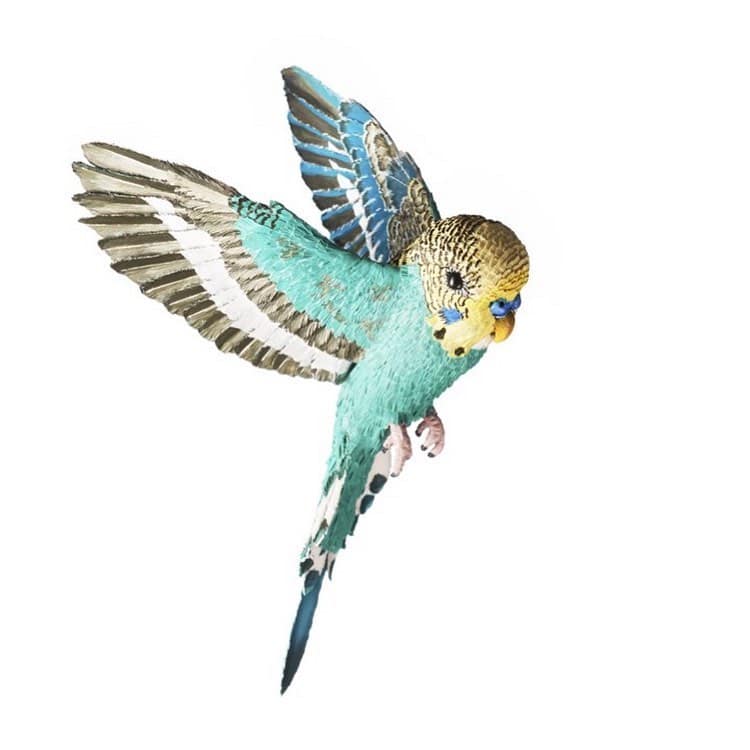
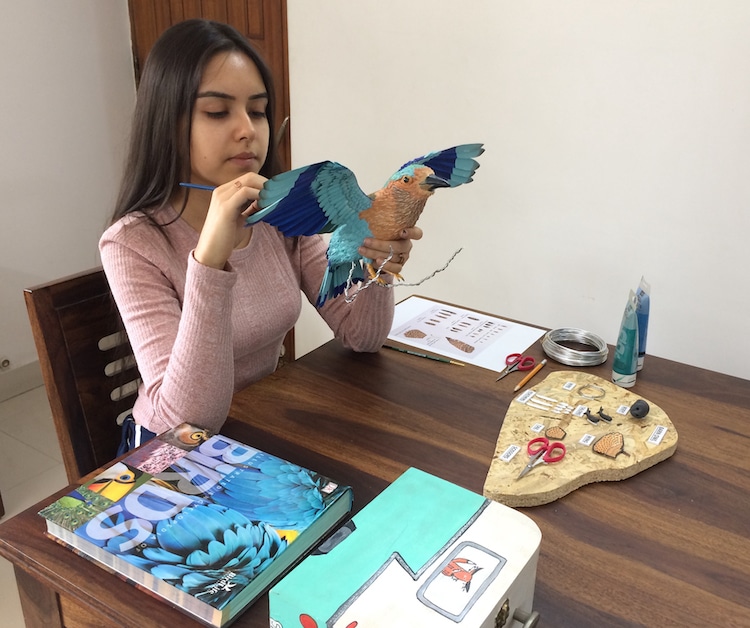
Niharika Rajput: Website | Facebook | Instagram | Etsy
My Modern Met granted permission to feature photos by Niharika Rajput.
Related Articles:
Interview: Photographer’s Adoration for the Ocean Captured in Towering Wave Portraits
Interview: Nature Photographer Reveals His Favorite Locales for Shooting Stunning Landscapes
Interview: Surreal Paintings of Sharks “Swimming” in Mid-Air Show a More Peaceful Side














































































